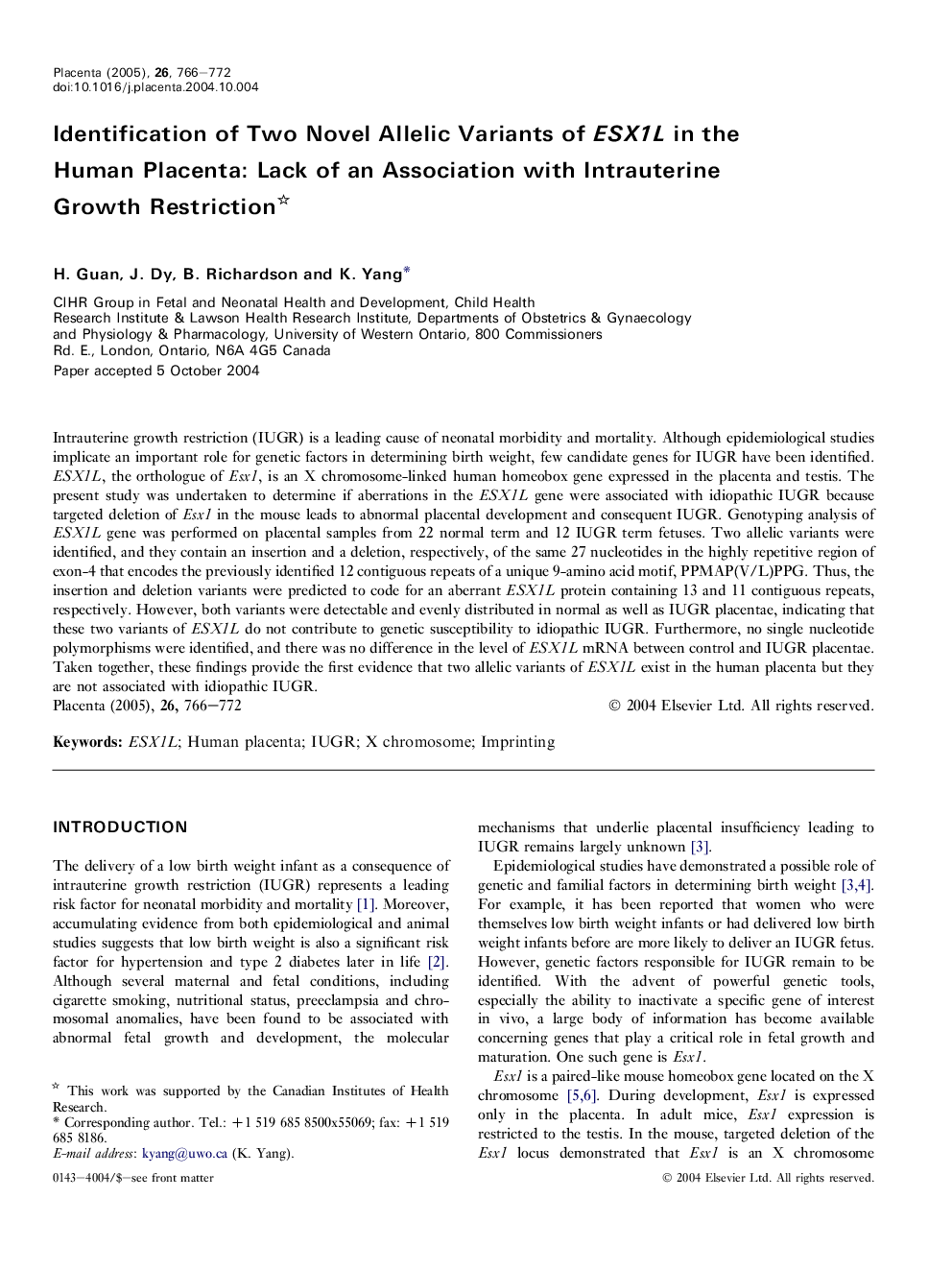| Article ID | Journal | Published Year | Pages | File Type |
|---|---|---|---|---|
| 9109125 | Placenta | 2005 | 7 Pages |
Abstract
Intrauterine growth restriction (IUGR) is a leading cause of neonatal morbidity and mortality. Although epidemiological studies implicate an important role for genetic factors in determining birth weight, few candidate genes for IUGR have been identified. ESX1L, the orthologue of Esx1, is an X chromosome-linked human homeobox gene expressed in the placenta and testis. The present study was undertaken to determine if aberrations in the ESX1L gene were associated with idiopathic IUGR because targeted deletion of Esx1 in the mouse leads to abnormal placental development and consequent IUGR. Genotyping analysis of ESX1L gene was performed on placental samples from 22 normal term and 12 IUGR term fetuses. Two allelic variants were identified, and they contain an insertion and a deletion, respectively, of the same 27 nucleotides in the highly repetitive region of exon-4 that encodes the previously identified 12 contiguous repeats of a unique 9-amino acid motif, PPMAP(V/L)PPG. Thus, the insertion and deletion variants were predicted to code for an aberrant ESX1L protein containing 13 and 11 contiguous repeats, respectively. However, both variants were detectable and evenly distributed in normal as well as IUGR placentae, indicating that these two variants of ESX1L do not contribute to genetic susceptibility to idiopathic IUGR. Furthermore, no single nucleotide polymorphisms were identified, and there was no difference in the level of ESX1L mRNA between control and IUGR placentae. Taken together, these findings provide the first evidence that two allelic variants of ESX1L exist in the human placenta but they are not associated with idiopathic IUGR.
Related Topics
Life Sciences
Biochemistry, Genetics and Molecular Biology
Developmental Biology
Authors
H. Guan, J. Dy, B. Richardson, K. Yang,
